6 Exciting Must Do New Orleans Excursions
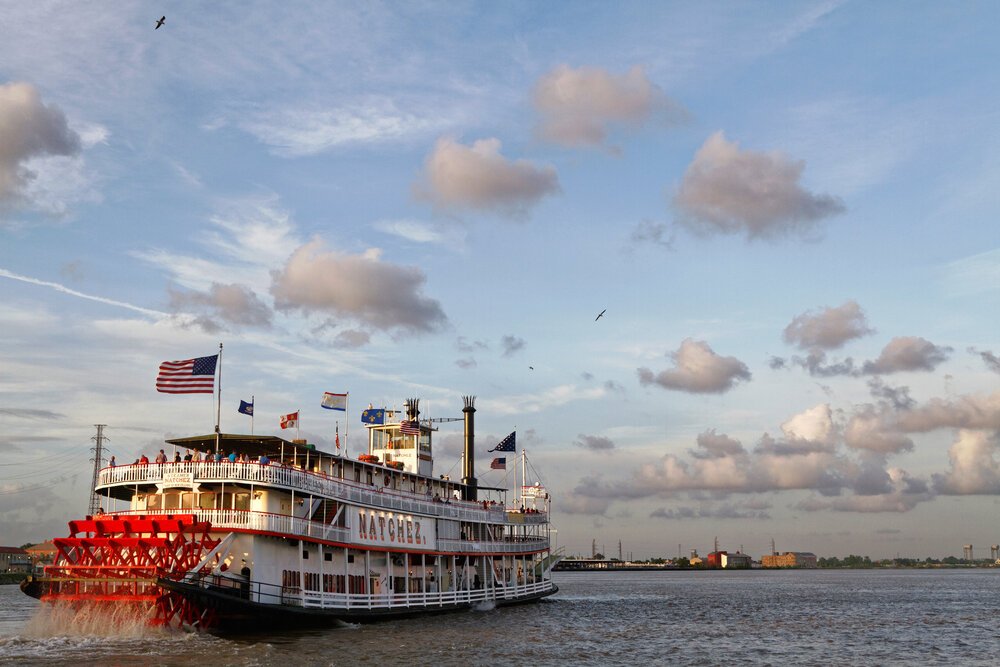
Arguably one of the liveliest cities in the United States, there are some must do New Orleans excursions as it is the perfect place to explore. From the many historical sites, exotic wildlife, and delicious cuisine, there is so much to experience. Annually, the city has continued to experience steady growth and the number of tourists is continuing to increase. Don’t miss out! Here are some of the must do NOLA excursions. Fly a Plane! The Flying Chop is the ultimate aviation experience. A session will last 50-minutes and does not require any previous knowledge with flying. The session involves a 20-minute on ground lesson and 30-minutes of flying. A certified instructor from the Federal Aviation Administration will accompany you the whole time. While in the aircraft you will be able to assist with take-off and landing. Be on the lookout for some famous New Orleans landmarks such as the Mississippi River, French Quarter, and Louisiana Bayou. Ghostly French Quarter Tour Take a frightening tour around the French Quarter. Your guide with take the time to explain some of New Orleans strange and creepy history that can be found around the city. The tour suits both ghost enthusiasts and non-believers. Listen to scary tales of a time long ago. This tour is the perfect way to spend some time in the French quarter neighborhood. Voodoo Walking Tour Take a guided tour through the famous St. Louis Cemetery and learn about the history and architecture of the grounds. Several famous people are buried here including famous football champions, human rights activists, and religious figures. When you visit the Voodoo Queen’s tomb make sure to pay close attention to the details your tour guide provides. The guide with help you understand the myths and beliefs of New Orleans Voodoo, a religion originating from West African beliefs. Also on the tour you will see Our Lady of Guadalupe and the Voodoo Temple. Visit the Lighthouse The New Basin Canal Lighthouse is located at Lake Pontchartrain. The lighthouse was badly damaged by Hurricane Katrina and was recently rebuilt. This is the only operational lighthouse In Louisiana. The building is open to the public and has a museum inside. Besthoff Sculpture Garden Your next stop should be the Besthoff Sculpture Garden. The garden contains 64 sculptures and is the largest sculpture garden in the United States. About 5 acres in size, the facility sits next to the New Orleans Museum of Art (also worth a visit). Steamboat Harbor Cruise It’s one of six working steamboats on the Mississippi River. As you cruise on the river, you will be able to see the iconic Chalmette Battlefield where Andrew Jackson bravely fought off the British in defense against the city of New Orleans. There is some much to experience in the city of New Orleans. This is just a short list of the many exciting excursions available. Bring your family down to Louisiana and take in everything that the south has to offer. Start booking your trip today!
Top 6 Things To Do In New Orleans
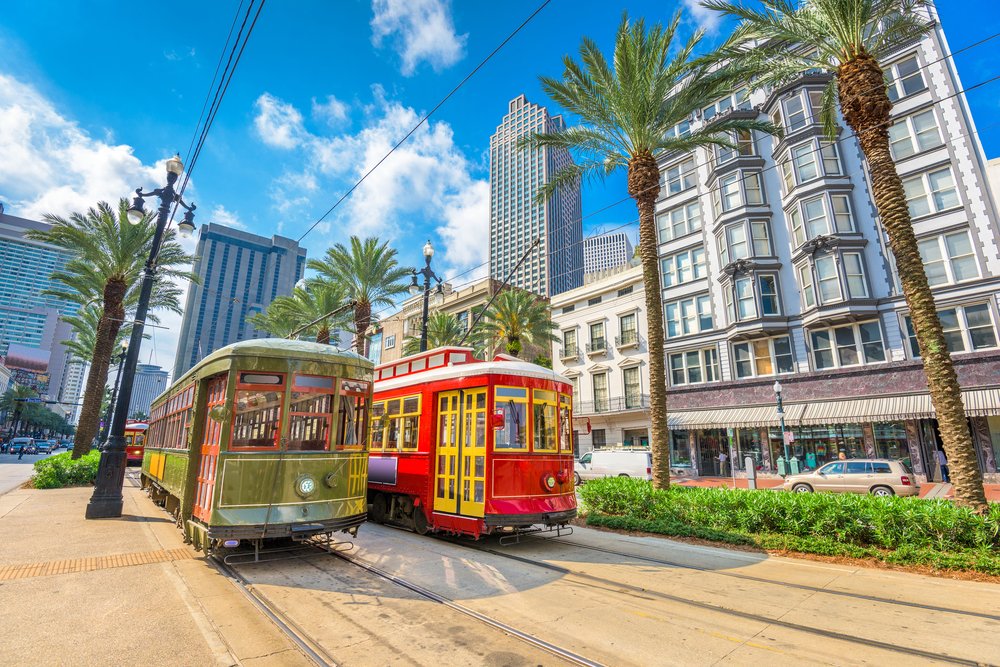
New Orleans proudly stands as one of America’s most iconic cities to visit. The famous French Quarter, Voodoo Authentica and the National WWII Museum are just a few of the attractions to visit and things to do in New Orleans. Also Known as the “Big Easy” the city has a vibrant nightlife, costumed parades, and electrifying street parties. Simply put, New Orleans has something for everyone. During the day stroll through the many street shops and taste our delicious cuisine from around the world. 1- Visit Voodoo Authentica This mystery shop sells Voodoo dolls, gris-gris bags, and potion oils, among other ritualistic paraphernalia. The shop also provides rituals, readings, and spiritual consultations. Stop by for a tarot card reading! This is a must-see for anyone interested in New Orleans Voodoo or searching a unique souvenir. 2- Take a Bayou Swamp Tour Don’t forget about a day trip exploring New Orleans’ Bayou by airboat. Airboats are powered by huge propeller-driven engines that allow the craft to reach up to 40 miles an hour while skimming over the water. A tour lasts about 1 hour and 45 minutes and expect to see bald eagles, snakes, hawks, alligators, and other wildlife that live in the waterways. This is a great way to experience the Bayou with the whole family. 3- Visit the French Quarter The charming architecture, live music, and rows of drinking establishments make it the ideal destination for people who like to party. Also known as the Vieux Carré, the French Quarter is the heart of the city with a rich history and colorful buildings. Take a walk down Bourbon Street for the ultimate food and party experience. Take a moment to wander around the many house galleries, music clubs and shops. 4- Spend a day at The National WWII Museum Located in the Warehouse District this world-class museum offers and interactive way to learn about World War II. Authentic boats, documents, weapons, and uniforms are all on display. Don’t miss the dramatic 4D theater experience narrated by Tom Hanks, complete with artillery explosions and simulated gunfire. This is the highlight of the museum! 5- Visit St. Louis Cemetery No. 1 Located in Greater New Orleans, St. Louis Cemetery No. 1 is a famous above-ground cemetery which houses the tombs of Voodoo queen Marie Laveau and other notable individuals from the 18th and 19th century. The ground in New Orleans is often saturated with water thus the dead aren’t buried. Instead, the cemetery houses mausoleums that form beautiful yet eerie homes for the dead. Make sure to wear comfortable shoes when exploring the grounds. 6- Tour Café du Monde, French Market Take a trip to Café du Monde for some tasty beignets and café au lait served here since 1862. The beignet is a deep-fried donut that is covered in powdered sugar. Open 24 hours a day, this renowned open-air coffee shop is located at the edge of the French Quarter making it the ideal stop after a full day of exploring. There is so much visitors can do in the city of New Orleans. From dancing in the street, visiting eerie voodoo shops, walking through the French Quarter, and taking a swamp tour, the options are endless. Hope to see you here soon!
The Mystical Realm of New Orleans Voodoo Religion
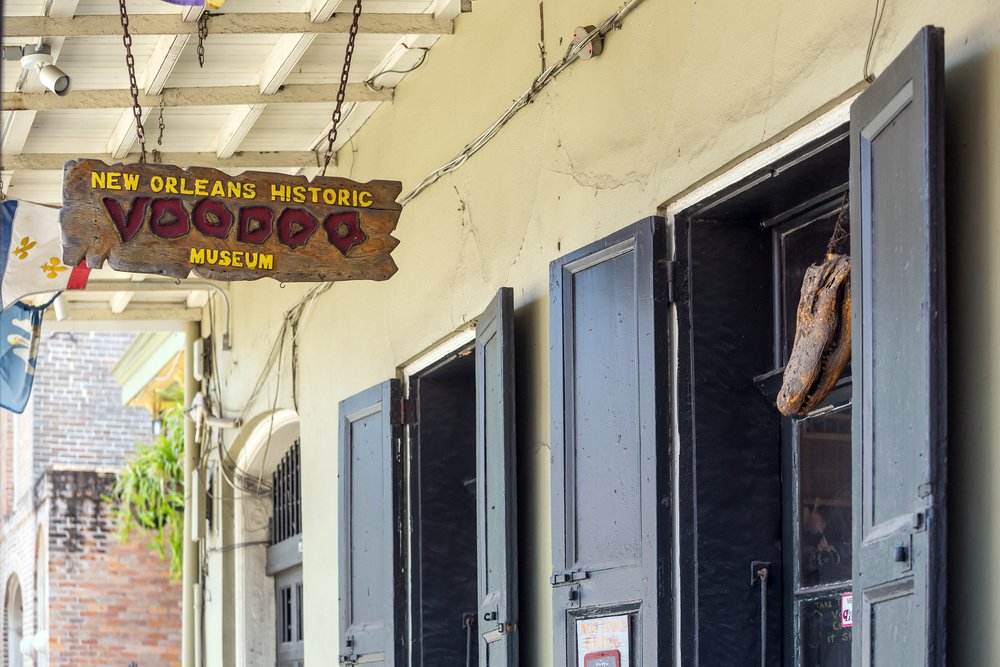
The bustling city of New Orleans is as famous for its vibrant music and lively streets as it is for the enigmatic establishment known as Voodoo Dispensary. This peculiar place, filled with mysticism, potions, and ancient rituals, has captured the curiosity of many. Voodoo, often misunderstood and shrouded in mystery, is a religious and spiritual practice with roots tracing back to West Africa. This article explores the origins, key beliefs, influential figures, cultural impact, and modern perceptions of New Orleans Voodoo. Key Takeaways New Orleans Voodoo is a complex belief system with roots in African, Catholic, and indigenous traditions. Key practices of Voodoo include rituals, ceremonies, and the use of Voodoo dolls and Gris-Gris bags. Influential figures in New Orleans Voodoo include Marie Laveau, known as the Voodoo Queen, and Doctor John Montanet, a Voodoo pioneer. Voodoo has significantly influenced New Orleans culture, including its music, dance, festivals, tourism, literature, and film. Modern perceptions and misconceptions of Voodoo are often shaped by Hollywood portrayals, with the reality of Voodoo today often misunderstood. The Origins and History of New Orleans Voodoo African Roots of Voodoo The roots of Voodoo can be traced back to the African traditional religions of West and Central Africa. These spiritual practices were brought to Haiti by enslaved Africans between the 16th and 19th centuries, with the greatest influences coming from the Fon and Bakongo peoples. On the island, these African religions mixed with the iconography of European-derived traditions such as Roman Catholicism and Freemasonry, taking the form of Vodou around the mid-18th century. In essence, Vodou is often described as syncretic, or a “symbiosis”, a religion exhibiting diverse cultural influences. This syncretism resulted in a system of correspondences between African spirits and Roman Catholic saints, with Afro-Haitians adopting other aspects of French colonial culture. Remember: Voodoo is not a primitive or savage religion, but a complex system of beliefs that has evolved over centuries, combining various cultural influences. The following list shows some of the key African influences on Voodoo: Bantu Jejé Ketu Comfa Convince Cuban Vodú Dominican Vudú Haitian Vodou Kumina Louisiana Voodoo María Lionza Maroon Palo Quimbanda Santería Spiritual Baptist Tambor de Mina Trinidadian Vodunu Umbanda Winti Each of these traditions has contributed to the rich tapestry of Voodoo as we know it today, with its unique blend of African, Catholic, and indigenous elements. The Evolution of Voodoo Practices As the 18th century progressed, Voodoo began to emerge as a composite of various African ethnic traditions, merging diverse practices into a more cohesive form. African religions had to be practiced secretly, with Roman Catholic iconography and rituals probably used to conceal the true identity of the deities venerated. This resulted in a system of correspondences between African spirits and Roman Catholic saints. Afro-Haitians adopted other aspects of French colonial culture, further influencing the evolution of Voodoo. Note: The evolution of Voodoo was a gradual process, influenced by a variety of cultural and religious practices. By the 20th century, those seeking to revive Louisiana Voodoo initiated practices that brought the religion closer to Haitian Vodou or Santería than it had been early in that century. The demographics of Voodoo practitioners also began to shift, with the majority of practitioners in Haiti also practicing Roman Catholicism. The evolution of Voodoo practices can be summarized in the following points: Emergence as a composite of various African ethnic traditions in the 18th century. Use of Roman Catholic iconography and rituals to conceal African religious practices. Influence of French colonial culture on Voodoo practices. Revival of Louisiana Voodoo in the 20th century, bringing it closer to Haitian Vodou or Santería. Shift in demographics of Voodoo practitioners, with most also practicing Roman Catholicism. Voodoo, shrouded in mystery, is a religious and spiritual practice with roots tracing back to West Africa. Combining elements of African, Catholic, and indigenous traditions, Voodoo has evolved into a unique and complex belief system. The ancient traditions are respected and preserved, offering visitors a rare opportunity to delve into the spiritual realm. Key Beliefs and Practices of New Orleans Voodoo The Voodoo Pantheon The Voodoo Pantheon is a complex and fascinating aspect of the New Orleans Voodoo religion. It comprises a multitude of spirits, or Loa, each with their unique characteristics, roles, and rituals associated with them. These spirits are not considered gods but rather intermediaries between humans and the supreme being, Bondye. The Loa are grouped into various ‘nations’ or families, each headed by a master Loa. Some of the prominent families include the Rada, Petro, and Ghede families. Here are a few notable Loa from these families: Rada Family: Known for being cool-tempered and benevolent. Key Loa include Legba (the gatekeeper), Loco (patron of healers and plants), and Ayizan (the market woman). Petro Family: Known for being hot-tempered and aggressive. Key Loa include Simbi (the magician), Gran Bwa (the great woodsman), and Marinette (the fierce warrior). Ghede Family: Associated with death and fertility. Key Loa include Baron Samedi (the lord of the graveyard), Maman Brigitte (the mother of the dead), and L’inglesou (the judge of the underworld). Remember, the Loa are not to be feared but respected. They play a crucial role in daily life, providing guidance, protection, and blessings to their followers. While the Voodoo Pantheon is extensive and diverse, it’s important to note that the worship and recognition of these Loa can vary significantly among practitioners, influenced by personal experience, tradition, and regional differences. Voodoo Dolls and Gris-Gris Bags In the mystical realm of New Orleans Voodoo, Voodoo Dolls and Gris-Gris Bags hold significant importance. These items are not mere trinkets but powerful tools used in rituals and ceremonies. Voodoo Dolls, contrary to popular belief, are not primarily used for harm or control over others. Instead, they serve as a spiritual conduit, a link to the divine or the spirit world. They are often crafted with personal items or symbols to strengthen the connection. Gris-Gris Bags, on the other hand, are small cloth bags filled with various items like herbs, stones, bones, hair, or pieces of cloth. Each item in the bag
Best New Orleans Swamp Tours
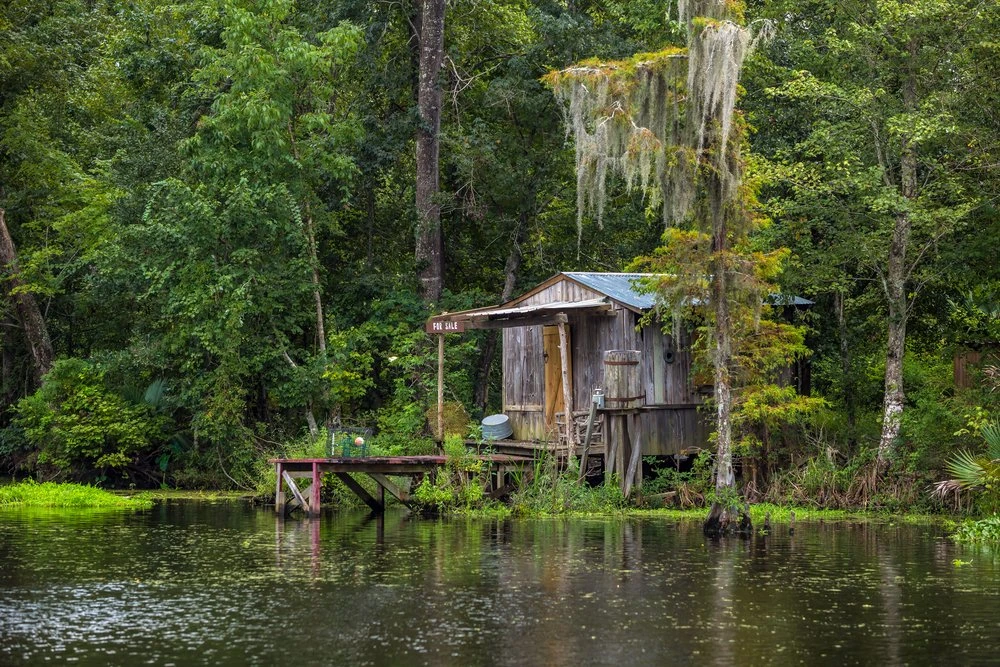
Discover your adventurous side during a bayou tour of New Orleans. Areas that are usually unreachable by foot can be reached by a boat tour through the shallow waters and canopied marshland revealing the city’s unrivaled beauty. Book a guided tour as an experienced boat captain offers in-depth information on the unique habitat that’s home to hundreds of animals. Here are the best 3 New Orleans swamp tours. Large Group Bayou Swamp Tours Soak in the sun while you enjoy a truly authentic New Orleans airboat tour. Packed with adventure, a swamp tour typically lasts one hour and forty-five minutes. Don’t forget your camera as you might come across wildlife like hawks, bald eagles, alligators, snakes and so much more. This tour is suitable for large and small groups. You can get a New Orleans airboat tour for bachelor and bachelorette parties, family outings, corporate events, school trips, and more. A large airboat can hold between 13 and 30 people depending on its size. For a more relaxed cruise, take the Covered Pontoon Swamp Boat. High Speed Airboat Tour Thrill-seekers, this one’s for you! Get a chance to hold an alligator as you ride on a motor-driven airboat. What better way to explore New Orleans than to take a fun high speed airboat swamp tour? You will glide comfortably over the marshland and deep into the secluded swamps. Your professional guide will give you helpful insight on the Bayou’s flora and fauna. Hold on as you alternate between gentle cruising and high-speed bursts. There will be plenty of chances to take photos of the wildlife you might encounter. Look out for bald eagles and baby alligators. Small Airboat Swamp Tour A small and private airboat tour may be the ideal choice for families and smaller groups of people. A small airboat can hold 6 to 10 passengers. If you want the ultimate comfort, choose a wholesome service that includes pick up and drop off at your local hotel. A boat ride on the swamps would include a visit to the marshland with glorious flora and fauna. You will also learn about the local legends and history of New Orleans. The waters are full of creatures like otters and alligators. There is no doubt that a trip to New Orleans is incomplete without experiencing the nature and wildlife in the nearby bayous and swamps. There are several tour operators that traverse the swampy areas for a chance to spot wild boars, gators, egrets and more. Choose from a fast-paced airboat tour or a slower educational cruise as you lurk in the murky waters. Whatever floats your boat, we hope you have an amazing time with the best airboat tour in New Orleans.
Top 7 Things to Do When Visiting New Orleans
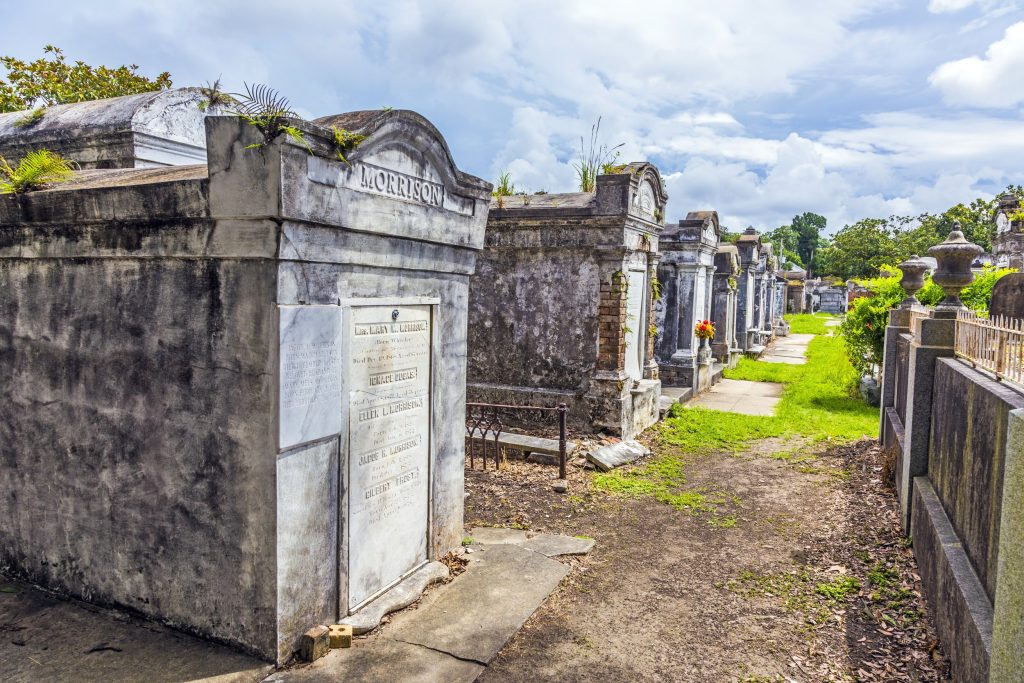
From spooky cemeteries to the neon lit streets, the “Big Easy” has plenty to offer tourists. Just a stroll down Bourbon Street can prove to be the most memorable experience for those who visit the area, but there are many diverse activities for you to accomplish in your time here. We’ve rounded up our seven favorite things to do, no matter where you go in New Orleans. Top 7 Things to Do When Visiting New Orleans New Orleans is a vibrant and culturally rich city known for its lively music scene, delicious cuisine, and unique blend of French, African, and American influences. Whether you’re a history buff, a foodie, or a music lover, there’s something for everyone to enjoy in the Big Easy. From exploring the historic French Quarter to taking a swamp tour and experiencing the excitement of Mardi Gras, here are the top 7 things to do when visiting New Orleans. Key Takeaways 1. Explore the French Quarter Visit Jackson Square Jackson Square is a must-visit destination in the heart of the French Quarter. This historic park is surrounded by stunning architecture and is home to the iconic St. Louis Cathedral. Take a leisurely stroll through the square and soak in the vibrant atmosphere. Don’t forget to try a beignet from the famous Café du Monde, located just across the street. It’s a delicious treat that pairs perfectly with a cup of coffee. If you’re lucky, you might even catch a street performance by talented local musicians. Jackson Square is a great place to start your exploration of New Orleans. Experience the lively atmosphere of Bourbon Street Bourbon Street is the heart and soul of the French Quarter, known for its vibrant and energetic atmosphere. As you stroll down the street, you’ll be surrounded by lively music, colorful neon lights, and a bustling crowd. Indulge in the lively spirit of Bourbon Street by trying out the numerous bars and clubs that line the street. From classic jazz to modern beats, there’s a venue for every music lover. If you’re feeling hungry, be sure to sample some of the mouthwatering street food available. From delicious po’boys to savory jambalaya, the local cuisine will satisfy your taste buds. Don’t forget to grab a famous Hurricane cocktail, a signature drink of New Orleans, to complete your experience on Bourbon Street. For a unique shopping experience, explore the eclectic mix of shops and boutiques. From souvenir stores to vintage clothing shops, you’ll find something for everyone. Take a break from the lively atmosphere and browse through the unique offerings of the local vendors. Tip: While Bourbon Street is known for its lively nightlife, it can get crowded and rowdy, especially during peak tourist seasons. Be aware of your surroundings and take necessary precautions to ensure a safe and enjoyable experience. Try authentic Creole and Cajun cuisine When visiting New Orleans, one of the must-try experiences is the authentic Creole and Cajun cuisine. Gumbo, a hearty stew made with a variety of ingredients including meat, seafood, and vegetables, is a signature dish that embodies the flavors of both cuisines. Another popular dish is jambalaya, a flavorful rice dish cooked with a mix of meats, vegetables, and spices. Be sure to also indulge in crawfish étouffée, a rich and creamy dish made with crawfish tails smothered in a savory sauce. For dessert, don’t miss out on trying the famous beignets, deep-fried dough sprinkled with powdered sugar. These dishes showcase the unique blend of French, Spanish, African, and Native American influences that make up the vibrant culinary scene of New Orleans. To fully appreciate the flavors of Creole and Cajun cuisine, consider visiting one of the many renowned restaurants in the city. From casual eateries to upscale dining establishments, there are options to suit every taste and budget. Some popular restaurants known for their Creole and Cajun dishes include Commander’s Palace, Emeril’s, and Cochon. Whether you’re a seafood lover or a fan of spicy flavors, New Orleans offers a culinary experience like no other. Discover the historic architecture New Orleans is known for its rich history and stunning architecture. As you explore the city, you’ll be captivated by the beautiful buildings that showcase the unique blend of French, Spanish, and American influences. The historic architecture in New Orleans tells a story of the city’s past and reflects its diverse cultural heritage. One notable example of historic architecture in New Orleans is the St. Louis Cathedral, located in Jackson Square. This iconic landmark is the oldest continuously active Roman Catholic cathedral in the United States. Its stunning Gothic Revival style and intricate details make it a must-visit for architecture enthusiasts. To fully appreciate the historic architecture in New Orleans, consider taking a guided walking tour. These tours provide fascinating insights into the different architectural styles and the stories behind the buildings. You’ll learn about the preservation efforts and the challenges faced in maintaining these historic structures. Whether you’re an architecture enthusiast or simply appreciate the beauty of old buildings, exploring the historic architecture in New Orleans is a must-do when visiting the city. 2. Immerse yourself in the music scene Listen to live jazz at Preservation Hall Preservation Hall is a must-visit for jazz enthusiasts. Located in the heart of the French Quarter, this iconic venue has been showcasing traditional New Orleans jazz since 1961. Immerse yourself in the soulful melodies and infectious rhythms of live jazz performances by talented local musicians. The intimate setting of Preservation Hall creates an intimate and authentic experience, allowing you to truly appreciate the artistry and improvisation of this unique musical genre. If you’re lucky, you might even catch a performance by some of the legendary jazz musicians who have graced the stage at Preservation Hall over the years. From the moment you step inside, you’ll be transported back in time to the golden age of jazz. Feel the energy as the musicians play their instruments with passion and skill, creating a vibrant atmosphere that is sure to leave you wanting more. To make the most of your visit to Preservation Hall, here are a few
History And Culture Of New Orleans
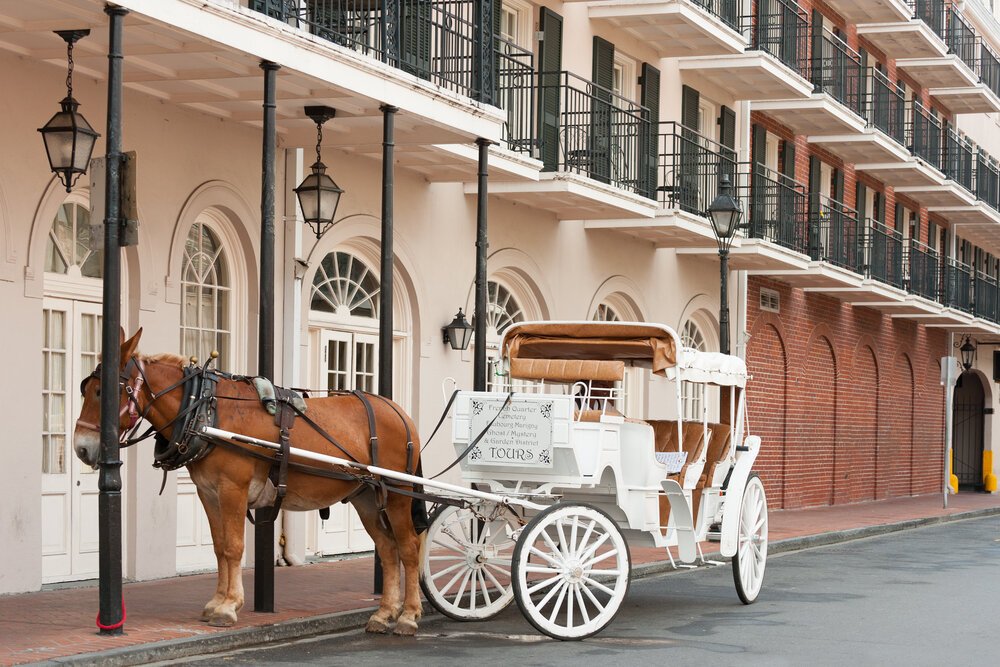
Without doubt one of the most beautiful cities in the world, New Orleans is strategically positioned along the Mississippi River. While New Orleans has been plagued with problems synonymous with coastal U.S cities it has remained defiant by choosing to preserve its rich culture and history. The First inhabitants of New Orleans The original inhabitants of New Orleans were a mixture of Canadian, Woodlands, and Mississippi cultures. The city of New Orleans was named the capital of Louisiana in 1722. The French colony took control of the city in 1723, transforming it into a vibrant hub of trading and commerce. The signing of the Treaty of Paris in 1763 saw Spain taking control of the city. It is during Spain’s 37-year rule that the city saw massive growth in trade and culture. During this period, the Great Fires of New Orleans in 1788 devastated most of the French architecture. It took over six years to rebuild, though shortly after another fire brought down a third of the city. The Spanish colony later relinquished Louisiana back to France. Then Napoleon sold the city to the United States in what was known as the Louisiana Purchase of 1803. Hurricane Katrina Hurricane Katrina was one of the worst storms to hit New Orleans. It swept across the city, displacing and killing many people. The date August 29th, 2005 when the category 5 hurricane made landfall remains one of the darkest days for the city of New Orleans. Food A common meal here is the Po’Boys sandwich which is made on a baguette-like French bread. The locals love it covered in vegetables and condiments. Another popular food is red beans and rice. This dish was historically served on Mondays. In the past, Mondays were traditionally laundry day when women of the household would be preoccupied with washing. They preferred to cook rice and beans on this day because it required minimal preparation. Music & Dance There is no better sound than New Orleans Jazz. The style is a bit faster than jazz found on the east coast. The earliest form of jazz was the Dixieland. It has since evolved into brass bands consisting of five to ten members that perform in the local streets and bars of New Orleans. Architecture Creole Townhouses are a common architectural style found in the French Quarter. They are made of bricks and have two or three-story balconies. Many of these buildings were destroyed by the fires in the 1700s, however, were later rebuilt by the Spanish. Shotgun Houses have an open concept with one room leading to other rooms without hallways. This style is great for hot climates because the space can be easily cooled down by opening both the front and back doors to allow a breeze through the entire house. The People of New Orleans New Orleans has a rich and diverse culture consisting of people from all walks of life. Some of these cultures include the Creole people who speak both French and Spanish and the Cajuns who are of French Canadian origin. To this day, New Orleans remains a place rich in culture and people who take pride in their city. Since the very first inhabitants, the people of New Orleans have continued to hold true to their traditions and remain strong when faced with challenges.
Top 5 New Orleans Attractions For Families
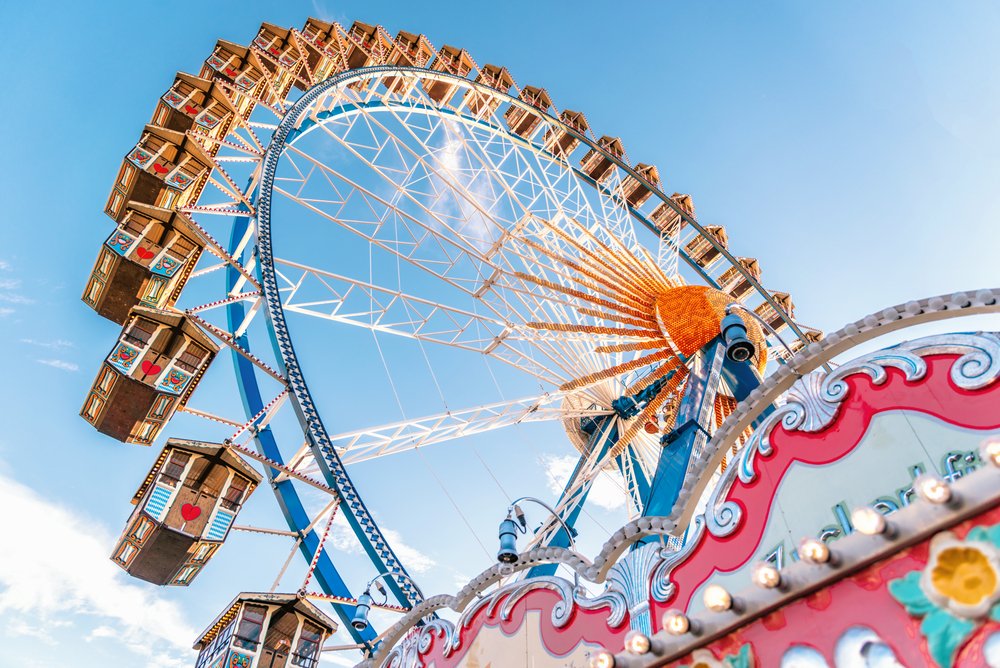
New Orleans is a vibrant city that offers a wide range of attractions for families. From exploring the outdoors to learning about history, there is something for everyone. Here are the top 5 New Orleans attractions that are perfect for families. New Orleans Attractions: Key Takeaways Audubon Zoo Experience Wildlife Up Close At the Audubon Zoo, families have the opportunity to get up close and personal with a wide variety of wildlife. Lions, tigers, and bears are just a few of the animals you can see in their natural habitats. The zoo offers interactive exhibits that allow kids to learn about different species and their habitats. Visitors can also enjoy animal encounters and shows, where they can watch trained animals perform amazing tricks and demonstrations. If you’re interested in learning more about the animals at the zoo, you can check out the following table that provides information about some of the most popular species: Animal Habitat Diet Lion Savannah Meat Tiger Jungle Meat Bear Forest Plants, Fish, Meat Whether you’re a wildlife enthusiast or just looking for a fun family outing, the Audubon Zoo is a must-visit attraction in New Orleans. Plan your visit today and get ready to experience wildlife up close! Interactive Exhibits for Kids The interactive exhibits at the Audubon Zoo provide a fun and educational experience for kids. Children can get up close to various animals and learn about their habitats and behaviors. One popular exhibit is the Giraffe Encounter, where kids can feed and interact with the gentle giants. Another highlight is the Cool Zoo, a water park with splash pads, water slides, and a lazy river. Kids can cool off and have a blast while learning about water conservation. In addition to the interactive exhibits, the zoo offers educational programs for kids. These programs include animal encounters, where children can meet and learn about different species, and shows featuring trained animals. It’s a great opportunity for kids to learn about wildlife and conservation in a hands-on and engaging way. If you’re visiting the Audubon Zoo with kids, be sure to check the schedule for feeding times and animal presentations. It’s a chance for children to see the animals in action and learn more about their daily routines and behaviors. Animal Encounters and Shows When visiting the Audubon Zoo, families have the opportunity to get up close and personal with a variety of animals. Lions, tigers, and bears are just a few of the incredible creatures that can be seen at the zoo. Kids will be amazed as they watch these majestic animals in action. In addition to observing the animals, there are also interactive exhibits where children can learn more about their favorite species. The zoo offers educational programs and shows that provide a deeper understanding of the animal kingdom. If you’re looking for a unique experience, consider participating in one of the animal encounters offered at the zoo. These encounters allow visitors to interact with animals under the guidance of trained professionals. From feeding giraffes to petting stingrays, these encounters create unforgettable memories for the whole family. For families who are animal lovers, the Audubon Zoo is a must-visit attraction in New Orleans. City Park Explore the Outdoors When visiting City Park, families can enjoy a wide range of outdoor activities. From strolling through the picturesque Botanical Gardens to exploring the Sculpture Garden, there is something for everyone. For those seeking a thrill, the Carousel Gardens Amusement Park offers exciting rides and attractions. Whether you’re looking to relax or have an adventure, City Park has it all. In addition to the beautiful scenery, City Park also offers various recreational facilities. Families can rent bikes and explore the park’s extensive trails or have a picnic in one of the many designated areas. There are also playgrounds and sports fields where kids can burn off some energy. With so much to do, City Park is the perfect place for families to enjoy the great outdoors. Table: City Park Facilities Facility Description Botanical Gardens Beautiful gardens with a diverse collection of plants Sculpture Garden Outdoor art gallery featuring unique sculptures Carousel Gardens Amusement Park Thrilling rides and attractions for all ages Trails Extensive network of trails for walking, running, and biking Picnic Areas Designated spots for enjoying a picnic lunch Playground Fun and safe play areas for children Sports Fields Fields for playing various sports Tip: Don’t forget to bring sunscreen and insect repellent when visiting City Park to protect yourself from the sun and bugs. Carousel Gardens Amusement Park Carousel Gardens Amusement Park is a must-visit attraction for families in New Orleans. This park offers a variety of fun rides and activities for kids of all ages. Carousel Gardens is known for its beautifully restored antique carousel, which is a favorite among visitors. In addition to the carousel, there are also other exciting rides such as the Ferris wheel, roller coaster, and bumper cars. If you’re looking for a break from the rides, Carousel Gardens also has a playground area where kids can run, climb, and play. There are picnic tables available for families to enjoy a meal or snack together. Don’t forget to bring sunscreen and hats to protect yourself from the sun while enjoying the outdoor attractions. Here are some of the highlights of Carousel Gardens Amusement Park: Tip: Arrive early to avoid long lines and make the most of your time at Carousel Gardens Amusement Park. Botanical Gardens and Sculpture Garden The Botanical Gardens and Sculpture Garden in City Park is a must-visit attraction for nature lovers. Surrounded by lush greenery, this serene oasis offers a peaceful escape from the bustling city. Take a leisurely stroll through the beautifully landscaped gardens and admire the diverse collection of plants and flowers. From vibrant roses to exotic orchids, there is something for everyone to enjoy. If you’re interested in art, make sure to explore the Sculpture Garden. Featuring stunning sculptures by local and international artists, this outdoor gallery adds a unique touch to the botanical experience. Marvel at the intricate details and discover the stories behind each piece. Whether you’re a botany enthusiast
The French Quarter, A Neighborhood Rich In History And Architecture
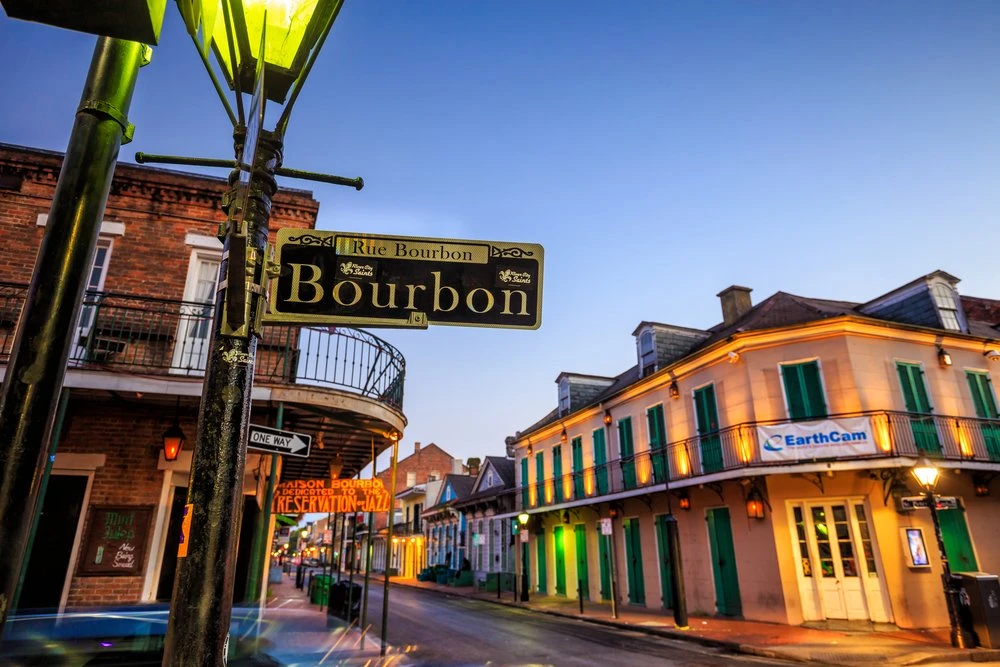
The French Quarter is a neighborhood in New Orleans that is known for its rich history and stunning architecture. This vibrant area is a melting pot of cultures, with influences from French, Spanish, African, and Caribbean traditions. From its origins as the founding site of New Orleans to its present-day reputation as a hub for food, music, and festivities, the French Quarter has a lot to offer. In this article, we will explore the origins of the French Quarter, historical landmarks, cultural diversity, architectural styles, and famous restaurants and bars that make this neighborhood a must-visit destination. Key Takeaways The Origins of the French Quarter The Founding of New Orleans New Orleans was founded in 1718 by the French Mississippi Company under the leadership of Jean-Baptiste Le Moyne de Bienville. The city was strategically located near the mouth of the Mississippi River, making it an important port for trade and commerce. The early settlers faced numerous challenges, including disease outbreaks and conflicts with Native American tribes. Despite these difficulties, the city grew rapidly and became a melting pot of different cultures and influences. The Development of the French Quarter The development of the French Quarter was a gradual process that took place over several centuries. It began with the establishment of New Orleans in 1718 by Jean-Baptiste Le Moyne de Bienville. The city was strategically located near the mouth of the Mississippi River, making it an important trading hub. As the city grew, so did the French Quarter. The area became a melting pot of different cultures and architectural styles. The influence of French and Spanish architecture can still be seen in the buildings and streets of the neighborhood. One notable feature of the French Quarter is its narrow, winding streets. These streets were originally designed to follow the natural contours of the land and to provide shade from the hot Louisiana sun. The French Quarter is also known for its vibrant nightlife. The neighborhood is home to numerous bars, clubs, and restaurants that offer a variety of entertainment options. From live jazz music to traditional Creole cuisine, there is something for everyone to enjoy in the French Quarter. Influence of French and Spanish Architecture The French Quarter is renowned for its unique blend of French and Spanish architectural styles. The influence of these two cultures can be seen in the design and construction of many buildings in the neighborhood. One notable example of French architecture is the Pontalba Buildings, which flank Jackson Square. These iconic red-brick structures were designed by Baroness Micaela Almonester de Pontalba in the 1840s and are considered to be the oldest continuously rented apartments in the United States. On the other hand, Spanish architecture is exemplified by the beautiful wrought-iron balconies that adorn many buildings in the French Quarter. These balconies, known as galleries, were influenced by the Spanish Colonial style and add a touch of elegance to the neighborhood. The combination of French and Spanish architectural elements creates a unique and charming atmosphere in the French Quarter, making it a must-visit destination for architecture enthusiasts. Historical Landmarks in the French Quarter Jackson Square Jackson Square is a historic park located in the heart of the French Quarter. It was originally known as Place d’Armes and was renamed in honor of Andrew Jackson, the hero of the Battle of New Orleans. The square is surrounded by beautiful historic buildings, including the St. Louis Cathedral, the Cabildo, and the Presbytère. It is a popular gathering place for locals and tourists alike, offering a peaceful retreat from the bustling streets of the French Quarter. In the center of Jackson Square stands a statue of Andrew Jackson on horseback, a prominent landmark that serves as a reminder of the city’s rich history. The square is also home to various street performers, artists, and musicians, adding to its vibrant atmosphere. Visitors can enjoy the picturesque views of the Mississippi River and take in the sights and sounds of this iconic location. If you’re visiting the French Quarter, a visit to Jackson Square is a must. It’s a place where history, culture, and art come together, creating a truly unique experience. St. Louis Cathedral St. Louis Cathedral is the oldest continuously active Roman Catholic cathedral in the United States. Located in Jackson Square, the cathedral is a prominent landmark in the French Quarter. The cathedral’s architecture is a blend of French Gothic and Spanish Colonial styles, reflecting the rich history and cultural influences of the area. Tip: When visiting the French Quarter, make sure to take a moment to admire the stunning architecture of St. Louis Cathedral. The Cabildo The Cabildo is one of the most significant historical landmarks in the French Quarter. It was originally built in 1795 as the seat of government for the Spanish colony of Louisiana. The building is a prime example of Spanish Colonial architecture, with its stucco walls, wrought iron balconies, and red-tiled roof. The Cabildo played a crucial role in the history of New Orleans. It was here that the Louisiana Purchase was finalized in 1803, doubling the size of the United States. Today, the Cabildo houses the Louisiana State Museum, where visitors can learn about the rich history of the city and state. If you’re planning a visit to the French Quarter, be sure to include the Cabildo on your itinerary. It offers a fascinating glimpse into the past and is a must-see for history buffs. The Presbytère The Presbytère is a historic building located in the French Quarter of New Orleans. It was originally built in 1791 as a residence for the Capuchin monks, but later served as a courthouse and a government building. Today, it houses the Louisiana State Museum, which showcases the history and culture of Louisiana. The Presbytère is a beautiful example of Spanish Colonial architecture, with its stucco walls, wrought iron balconies, and red-tiled roof. The building features a central courtyard and a second-floor gallery that offers stunning views of the surrounding area. Inside the museum, visitors can explore exhibits on topics such
Louisiana Swamp Animals You Will See On A Swamp Tour

A Bayou Swamp Tour is much more than an airboat ride. Expect your two-hour trip to be as thrilling as it is informative. Have you ever thought about the wildlife that hides in the mysterious swamps? New Orleans has the most biologically diverse ecosystems in the US. Its swamps and bayous are home to various species of birds, reptiles, fish, and mammals that thrive in its fertile waters. There will be plenty of opportunities to take an Instagram-worthy picture of the scenic swamps and exotic swamp animals. Here is what you can look out for during your trip. Alligators Experience the gator up close and learn about the conservation efforts in the region. You will definitely spot a number of alligators soaking in the sun. If you don’t, look in the lagoons and waterways to find a gator lurking in the dark. Enlisting the services of a good guide will help you maximize the chances of spotting an alligator in the wild. Bayou Swamp Tours have seasoned experts who know where to spot wildlife in the marshland. Otters There are plenty of river otters that have made New Orleans’ swamps and bayous their home. The river otter burrows a hole close to the riverbank or swamp shoreline to have access to water. Members of the weasel family, otters hunt during the night and feed on what it can find. Fish is their favorite food but they can also eat turtles, amphibians, and crayfish. Wild Boars Wild boars are invasive members of the pig family that have taken over the wetlands of Louisiana. In an effort to combat their growing numbers, residents and tour companies are hunting the wild hogs for their meat. The wild boar meat trade has helped to save the local wildlife and wetlands. Don’t be shy to ask for a simmering hot smoked sausage made from wild hog meat during your trip. Turtles Get a chance to see the gigantic alligator snapping turtle in the swamps. This is the largest freshwater turtle in North America and among the biggest in the world. With a spiked shell, beaklike jaws and a thick, scaled tail, this turtle is a dreadful animal to look at. “The dinosaur of the turtle world” is nothing but picky. Besides eating fish and amphibians, the turtle hunts bigger prey like armadillos and raccoons. Birds There are many birds thriving in the area because of the abundant amount of fish. The marshland has many bird species like egrets, cranes, and herons that wade through its meandering waterways feeding on small fish, amphibians, and crustaceans. Nutria Also known as river rats, nutria are large rodents that live in the Louisiana wetlands. These unwelcome guests have bad feeding and burrowing habits that ruin plant life. Experience the pristine wilderness of New Orleans on a boat. Inhabited by raccoons, bobcats, turtles, birds, and alligators, the bayous and swamps offer you an exciting chance to mingle with nature. If you are up for an exhilarating trip, journey through the Bayou country with native guides who will share their knowledge on the wetlands.
Top 5 Things To Do In NOLA
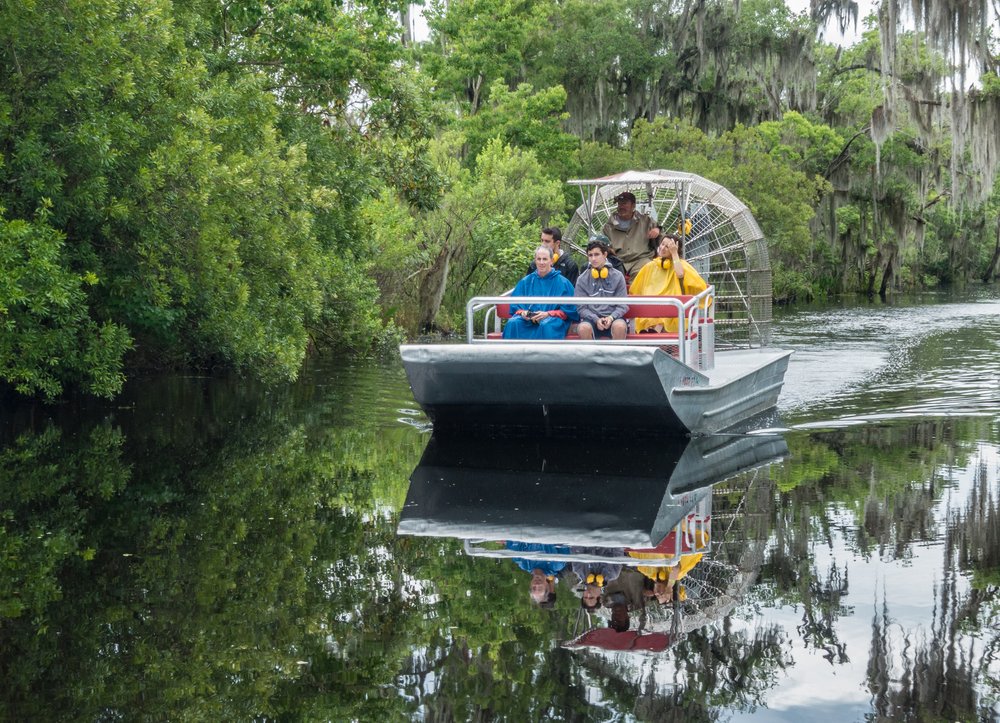
Top 5 Things To Do In NOLA 1- The National WWII Museum Explore a different side of New Orleans and get transported back to World War II. This museum is ranked as the second best in the world, located in the Warehouse/Central Business District of New Orleans. The space includes exhibits that tell a tale about the Homefront and those of men away at war. Discover the history behind the war and its influence on the present. The museum offers guided tours by their knowledgeable staff along with the chance to ride in a restored PT-Boat. 2- New Orleans Ghost, Voodoo and Vampire Tour Take a guided group tour at night in the French Quarter to hear some gruesome and chilling stories. Visit the home of rumored vampire, Jacques St. Germaine at the Madame LaLaurie’s Creole Mansion. Hear suspenseful stories about the history of the New Orleans Pharmacy Museum and the potions they sold. This walking tour covers about five blocks and the tour guides know all the shortcuts to getting around on a spooky night. 3- Whitney Plantation Tour *Transportation provided Visit the Whitney Plantation where at one point was home to many slaves. This tour is different from others as it is the only one that focuses on the history of the people who worked in the fields. Listen to narratives and view exhibits from those who once bond to this land. The plantation dates back over 260 years and is considered to be one of the best preserved. 4- Visit the French Quarter The best neighborhood to experience the culture of New Orleans is the French Quarter. Referred to as the heart and soul of NOLA, this is the oldest section of the city. Make sure to check out the infamous Bourbon Street with its lively nightlife and delicious cuisine. Enjoy a night out or consider one of the many walking tours during the day. There is something for everyone! 5- Take a ride on a swamp tour! Looking for something out of the ordinary? Ride through the Louisiana Bayou on an Airboat. Keep your eyes peeled for boars, alligators, eagles and other native animals of the swamp. A fun experience for the entire family. Tours are led by swamp guide experts that give lots of information on the history of the Bayou and New Orleans.
